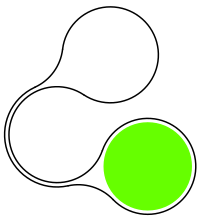Here is one little-known and one completely unknown result.
The little known result is the Mean Motion Theorem. This says that for all real numbers $\lambda_j$
and all complex numbers $a_j$ the following limit exists:
$$m:=\lim_{t\to+\infty}\phi(t)/t,\quad\mbox{where}\quad \phi(t)=\arg\sum_{j=1}^na_je^{i\lambda_jt},$$
where $t$ is real.
(There is a natural way to define what happens to the $\arg$ at the zeros, but
there is not much loss in generality if one assumes for simplicity that the sum has no real zeros).
This result was conjectured by Lagrange, coming from celestial mechanics, and was proved in full generality by the
combined efforts of H. Weyl, P. Hartman and A. Wintner in the 1930s.
The final result, without any restrictions on $\lambda_k,a_k$ is
due to B. Jessen and H. Tornehave in 1945. It seems that the subject was forgotten after the 1940s.
The completely unknown result is a much stronger statement for $n=3$ under some additional conditions on $\lambda_j$ and $a_j$, namely that
$$\phi(t)=mt+O(1).$$
This is due to Piers Bohl in 1909.
I have never seen any reference on this stronger result, or any discussion of
possible generalization to larger $n$.
Weyl, Wintner and Hartman refer to Bohl proving the $n=3$ case of their results, the first non-trivial case, but do not discuss the $O(1)$. Favorov's paper from 2008 has Bohl's paper in the reference list but also does not discuss the $O(1)$. In fact I have not seen ANY mention
of a more precise error term than $o(t)$ in the literature. A number of papers GENERALIZE
the mean motion theorem to infinite sums. But nobody addresses the improvement
of the error term. Here is another piece of evidence that the result is "completely unknown": Precise form of the mean motion theorem.
Remark on references. The only book I know which addresses the subject is Sternberg's 1969 book. (This book has a rare distinction: it is not reviewed in Mathscinet:-) The whole first chapter of the book explains the historical background: the problem is evidently related to constructing a calendar:-)
Weyl's 1938 paper is very well written, fortunately in English, and accessible to a non-specialist. If you can read German or Russian, Bohl's paper is also good reading, it is completely elementary. I suspect that nobody reads Bohl since his result has been "superseded" by Weyl and Co. It does not help that it
was published in German.
References in chronological order:
Bohl, P., Über ein in der Theorie der säkularen Störungen vorkommendes Problem.
J. für Math. 135, 189-283 (1909). (There is a Russian translation which is difficult to obtain, so I post it here for the benefit of this community.)
Weyl, Hermann, Mean motion, Amer. J. Math. 60, 889-896 (1938)
B. Jessen and H. Tornehave, Mean motions and zeros of almost periodic functions.
Acta Math. 77, (1945). 137–279.
S. Sternberg, Celestial mechanics, Part 1, W. A. Benjamin, NY, 1969.
Favorov, S. Yu., Lagrange's mean motion problem, Algebra i Analiz 20 (2008), no. 2, 218--225; translation in St. Petersburg Math. J. 20 (2009), no. 2, 319–324. MR2424001

